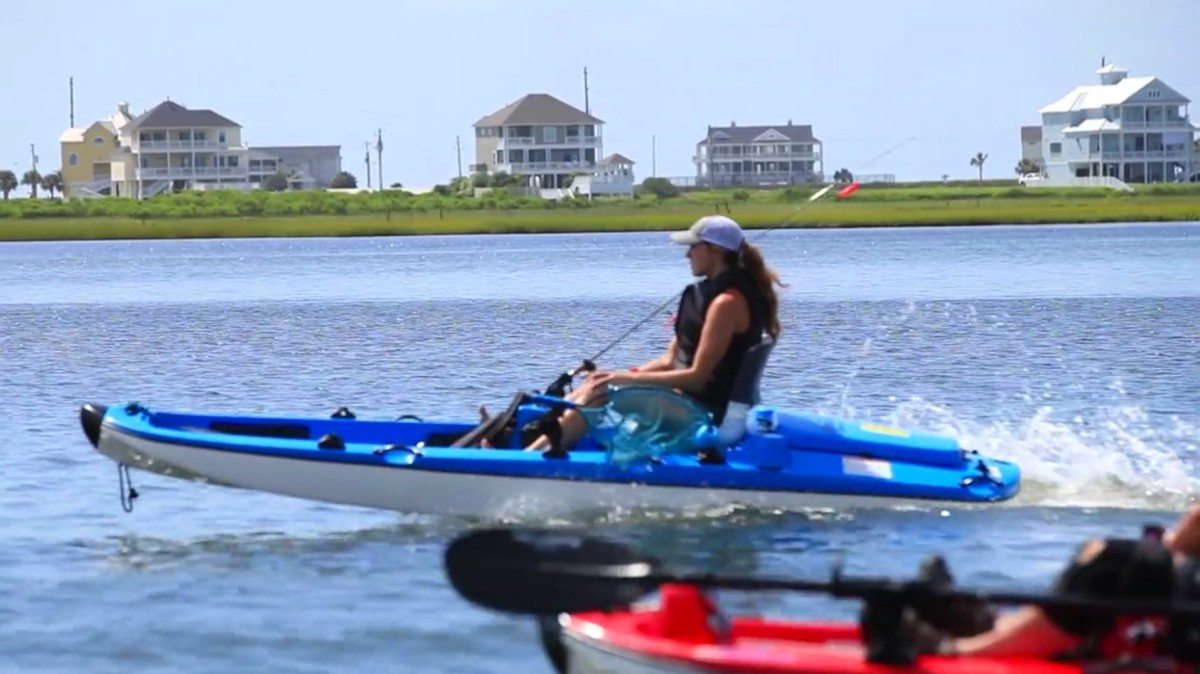The Impact of Kayak Weight on Trolling Motor Performance: A Comprehensive Guide
Kayak fishing enthusiasts know that the relationship between kayak weight and trolling motor performance can make or break a successful day on the water. Understanding how your vessel's mass affects propulsion is crucial for optimizing your fishing experience, ensuring efficient movement, and maximizing battery life. This article delves deep into the intricate dynamics of kayak weight and its critical influence on trolling motor effectiveness.
What Exactly Is the Relationship Between Kayak Weight and Trolling Motor Performance?

The connection between a kayak's weight and its trolling motor's performance is more complex than most anglers realize. Weight isn't just a number—it's a critical factor that determines how efficiently your electric propulsion system operates. Every pound matters when you're navigating through water, affecting everything from battery consumption to overall maneuverability.
How Does Kayak Weight Directly Impact Motor Efficiency?
Kayak weight plays a pivotal role in determining how hard your trolling motor must work. Heavier kayaks require more electrical energy to move, creating a cascade of performance challenges that can significantly impact an angler's fishing experience. The most immediate and noticeable effect is increased battery drain. As the kayak's weight increases, the trolling motor must expend substantially more electrical power to overcome water resistance, which dramatically reduces battery life and range.
This additional weight creates a compounding problem for motor efficiency. The increased mechanical stress means the motor works harder with each rotation, generating more heat and potentially shortening the motor's lifespan. Anglers might find themselves experiencing reduced top speeds, slower maneuverability, and a decreased ability to navigate challenging water conditions. A kayak that's 50 pounds heavier can reduce motor efficiency by up to 30-40%, transforming what could be a smooth fishing trip into a frustrating battle against your own equipment.
Calculating the Performance Impact: Weight-to-Power Ratio
To truly understand the relationship, anglers must consider the weight-to-power ratio. This mathematical approach helps determine how effectively a trolling motor can move a specific kayak weight. Professional kayak fishermen often use a simple calculation:
Motor Thrust (lbs) ÷ Total Kayak Weight = Performance Efficiency Percentage
For instance, a 55-pound thrust trolling motor on a 120-pound kayak would have a significantly different performance compared to the same motor on a 200-pound kayak loaded with gear.
What Factors Contribute to Kayak Weight Beyond the Base Model?

While a kayak's base weight is important, real-world performance depends on multiple additional factors. Anglers must consider the total loaded weight, which includes various equipment and personal gear that accumulate quickly.
Gear and Equipment Weight
The accessories and equipment you bring dramatically impact your kayak's total weight. Experienced anglers understand that every piece of equipment contributes to the overall load, from fishing rods and tackle boxes to coolers, live wells, anchors, and personal safety equipment. A typical fishing kayak can easily add 30-50 pounds of additional weight through standard gear, transforming a lightweight vessel into a significantly more challenging craft to propel.
Material Considerations in Kayak Construction
Different kayak materials significantly influence base weight and motor performance. Polyethylene kayaks offer durability but come with substantial weight penalties, often weighing 20-30% more than composite alternatives. Composite kayaks provide a lightweight solution, utilizing advanced materials that reduce overall weight without compromising structural integrity. Inflatable kayaks present a unique middle ground, with weights varying dramatically based on construction and intended use.
Material Considerations in Kayak Construction
Different kayak materials significantly influence base weight and motor performance:
Polyethylene Kayaks: Durable but heavier
Composite Kayaks: Lightweight and efficient
Inflatable Kayaks: Varies widely in weight
Hybrid Materials: Balancing durability and weight
How Can Anglers Optimize Trolling Motor Performance?

Maximizing your trolling motor's effectiveness requires strategic planning and understanding of weight dynamics.
Battery Selection and Management
Choosing the right battery is crucial for maintaining optimal performance:
Lithium batteries offer lighter weight and longer life
Deep cycle marine batteries provide consistent power
Consider weight-to-capacity ratios when selecting batteries
Strategic Weight Distribution
Proper weight distribution can significantly improve kayak handling and motor efficiency. Techniques include:
Centering heavier items
Balancing side-to-side load
Using weight-forward or weight-aft configurations
Practical Recommendations for Kayak Anglers
Weigh Your Fully Loaded Kayak: Know exactly what you're asking your motor to move
Choose Lightweight Gear: Invest in compact, lightweight equipment
Regular Motor Maintenance: Keep your trolling motor in peak condition
Battery Management: Monitor and optimize battery performance
Frequently Asked Questions
Q: How much weight is too much for a trolling motor? A: Most trolling motors are rated for specific weight capacities. Generally, staying within 20-25% of the motor's maximum recommended weight ensures optimal performance.
Q: Can I use a higher thrust motor to compensate for weight? A: While possible, this isn't always the most efficient solution. Higher thrust motors consume more battery power and may not provide proportional performance improvements.
Q: How often should I recalibrate my trolling motor for weight changes? A: Whenever you significantly change your kayak's load, such as adding new gear or changing fishing locations, it's wise to reassess your motor's performance.
Conclusion
Understanding the intricate relationship between kayak weight and trolling motor performance empowers anglers to make informed decisions, ultimately enhancing their fishing experience.

